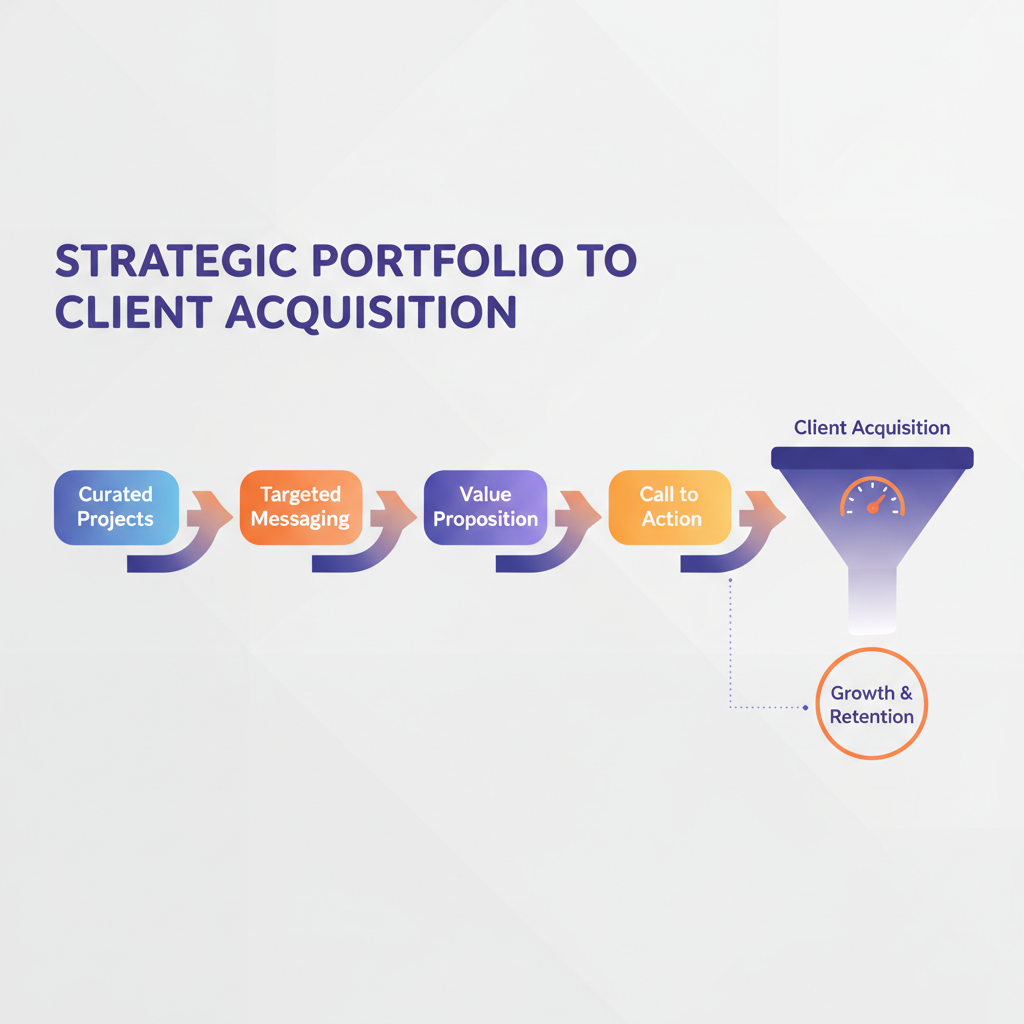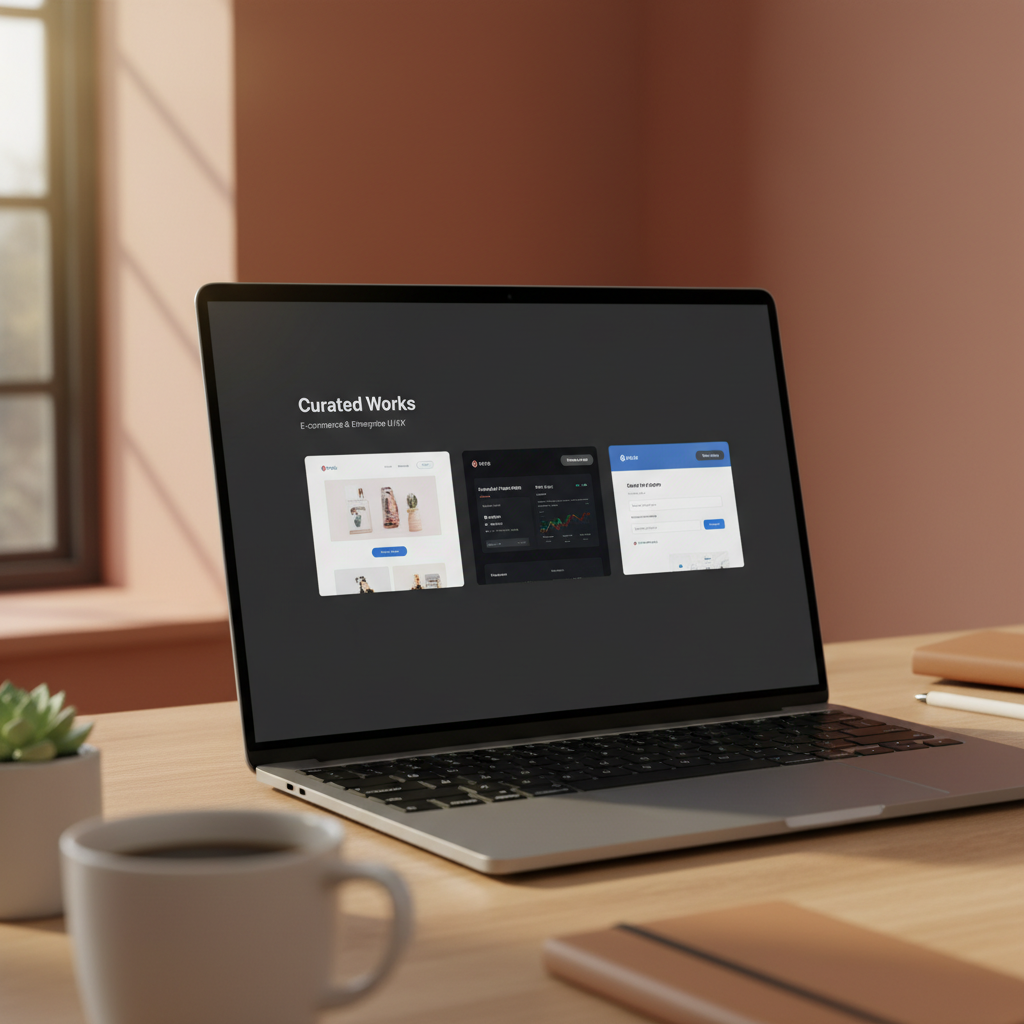Is your portfolio website getting plenty of clicks but crickets in your inbox? You’ve showcased your best work, the design is clean, but it’s just not converting visitors into clients. The problem isn’t your skill; it’s your strategy. It’s time to stop treating your portfolio like a passive gallery and start building it like an active sales machine. We'll show you how to use AI to bake a client-winning strategy right into your professional page.
Key Takeaways: Build a Smarter Portfolio
- Strategy First, Design Second: Learn to apply a simple marketing framework (STP) *before* you even think about layouts.
- AI as Your Strategist: Use tools like the Livesume AI Helper and ChatGPT to define your ideal client and unique selling proposition, not just write copy.
- Convert, Don't Just Display: Structure your portfolio sections to answer client questions and guide them directly to your contact form.
- Pick Projects with Purpose: Discover why showcasing your "best" work might be hurting you and how to select projects that attract the clients you actually want.

Why Isn't Your Current Portfolio Getting You Clients?
Most freelance portfolios make the same critical mistake: they focus entirely on tactics over strategy. You spend hours agonizing over button colors, font pairings, and project layouts, but you miss the one thing that matters most to a potential client: "Is this person the right fit for *my specific* problem?"
A portfolio without a clear strategy is like a résumé sent to a random email address. It shows what you can do, but it doesn't explain why you’re the perfect solution for the person viewing it. The result? Visitors are impressed, but they don't see themselves in your work, so they click away.
Before: A beautiful gallery of disconnected projects that gets compliments but no leads.
After: A targeted digital portfolio where every project, headline, and service description works together to convince a specific type of client that you are their go-to expert.
The 3-Step Framework for a Client-Winning Portfolio
Forget dense marketing textbooks. We’re going to use a simple but powerful framework called STP—Segmentation, Targeting, and Positioning. It’s how big brands dominate their markets, and you can use it to dominate your niche. Let's make it practical.
Step 1: Segmentation (Who Could You Serve?)
First, you need to map out the entire market. Don't try to be for everyone. Segmentation is about brainstorming all the potential groups of clients you *could* help. We can use AI as a research assistant here.
Fire up ChatGPT or Claude and use a simple prompt to get started:
"I am a [Your Skill, e.g., Web Designer]. What are the different types of businesses or individuals who need this service? Categorize them by industry, company size, and budget level."
This exercise isn’t about choosing yet; it’s about seeing the possibilities. You’ll quickly get a list of potential niches, like "early-stage tech startups," "local service businesses," or "e-commerce brands selling physical products."
Step 2: Targeting (Who *Should* You Serve?)
Now, you choose your battle. From the segments you identified, you need to pick one to target. This is the single most important decision you'll make. To choose, ask yourself:
- Which group has a painful problem I can solve? (Hint: "Needing a website" isn't a pain point. "Losing customers to a clunky online checkout" is.)
- Which group can I genuinely help the most? (Where does your experience give you an edge?)
- Which group is profitable and accessible? (Can you reach them, and can they afford you?)
For deeper insights, you can use tools like SparkToro or GWI to understand where these audiences hang out online and what their biggest challenges are. Once you’ve picked your target, you’ve defined your niche.

Step 3: Positioning (How Will You Win Them Over?)
Positioning is how you want your target audience to see you. It's your unique angle. Are you the fastest, the most affordable, the most specialized? Your positioning statement becomes the DNA of your portfolio’s copy.
This is where the Livesume AI Helper shines. Instead of staring at a blank screen, you can use it to generate powerful positioning statements. Navigate to the professional page builder and try a prompt like this:
"Generate three positioning statements for a [Your Skill] who targets [Your Niche] and specializes in [Your Unique Value, e.g., fast turnaround times, SEO optimization, converting more leads]."
The AI will give you compelling options that you can use as your headline, in your bio, and across your service descriptions. This ensures your message is consistent and laser-focused on your ideal client.
Stuck on Your Positioning?
Don't guess what works. Use the Livesume AI Helper to generate three unique positioning statements for your freelance business right now.
Build Your Professional Page
Turn Your Strategy Into a High-Converting Page
With your STP framework complete, building the actual portfolio becomes easy. Every decision is guided by your strategy.
Nail Your Headline and Bio
Your main headline should be your positioning statement. Instead of "Jane Doe - Web Designer," it becomes "The Web Designer for E-commerce Brands That Need to Boost Conversion Rates." Anyone who isn’t in that target audience can leave; the right ones will be hooked.
Structure Your Service Offerings
Don’t just list what you do. Package your skills into a clear services page that solves a specific problem for your target client. Frame your packages around outcomes, not tasks.
Before: A list of skills like "HTML, CSS, JavaScript, SEO."
After: A service package named "The Startup Launchpad: A complete website and branding package to get your new business client-ready in 30 days."
Curate Your Projects with Surgical Precision
This is the counter-intuitive part: stop showing off *all* your best work. Only showcase the projects that are directly relevant to your target client. If you target e-commerce brands, three strong e-commerce case studies are infinitely more powerful than a dozen random projects that include a restaurant menu and a band poster. Your portfolio should prove you are a specialist, not a generalist.

Frequently Asked Questions
1. How do I make my freelance portfolio stand out?
Stop trying to impress everyone. Stand out by choosing a specific niche (Targeting) and crafting a clear, compelling message for that audience (Positioning). A specialized portfolio for a small audience will always outperform a generic portfolio for a large one.
2. Why is my portfolio website not getting clients?
It's likely a strategy problem, not a design problem. Your site probably focuses on *you* (your skills, your work) instead of the *client* (their problems, their goals). Re-frame your content to show how you solve their specific pain points.
3. How do I define a niche for my freelance business?
Use the Segmentation and Targeting steps from the STP framework. Brainstorm all possible client groups, then select one based on where you can provide the most value and which is most profitable. Don't be afraid to start narrow; you can always expand later.
4. What is the STP framework for a freelancer?
It’s a simple process: 1) **Segment** the market into different client types. 2) **Target** the single group you want to work with. 3) **Position** yourself as the perfect expert for that specific group’s needs. It moves you from a generalist to a sought-after specialist.
5. How can AI help me with my marketing strategy?
AI is a fantastic strategy partner. Use it for initial market research (segmentation), generating audience personas (targeting), and drafting compelling value propositions and headlines (positioning). Tools like the Livesume AI Helper bake this directly into your workflow.
6. What should a service page on a portfolio include?
Your services page should feature 2-4 core packages with clear names, prices (or a "starting at" price), and deliverables. Most importantly, describe the outcome and benefit for the client, not just the list of tasks you will perform.
7. What are the most common mistakes in a freelance portfolio?
The top three are: 1) No clear target audience. 2) Showcasing irrelevant work that doesn't speak to the ideal client. 3) Using generic headlines and copy like "I build beautiful websites" instead of a specific, value-driven positioning statement.
From Portfolio to Client-Winning Engine: Your Next Steps
Your portfolio is your most powerful sales tool, but only if you build it with a strategy. Stop thinking like an artist arranging a gallery and start thinking like a CEO building a sales funnel.
- Define Your STP: Take 30 minutes right now to define your Segment, Target, and Positioning. Use AI to speed up the process.
- Audit Your Current Portfolio: Does your headline speak directly to your target client? Is every project you show relevant to them? Cut anything that isn’t.
- Rebuild with Intention: Start a new live resume or professional page on Livesume. Use your positioning statement as the headline and build out your services and project sections to support it.
Stop waiting for clients to find you. Build a strategic portfolio that actively seeks them out and convinces them you’re the only choice.